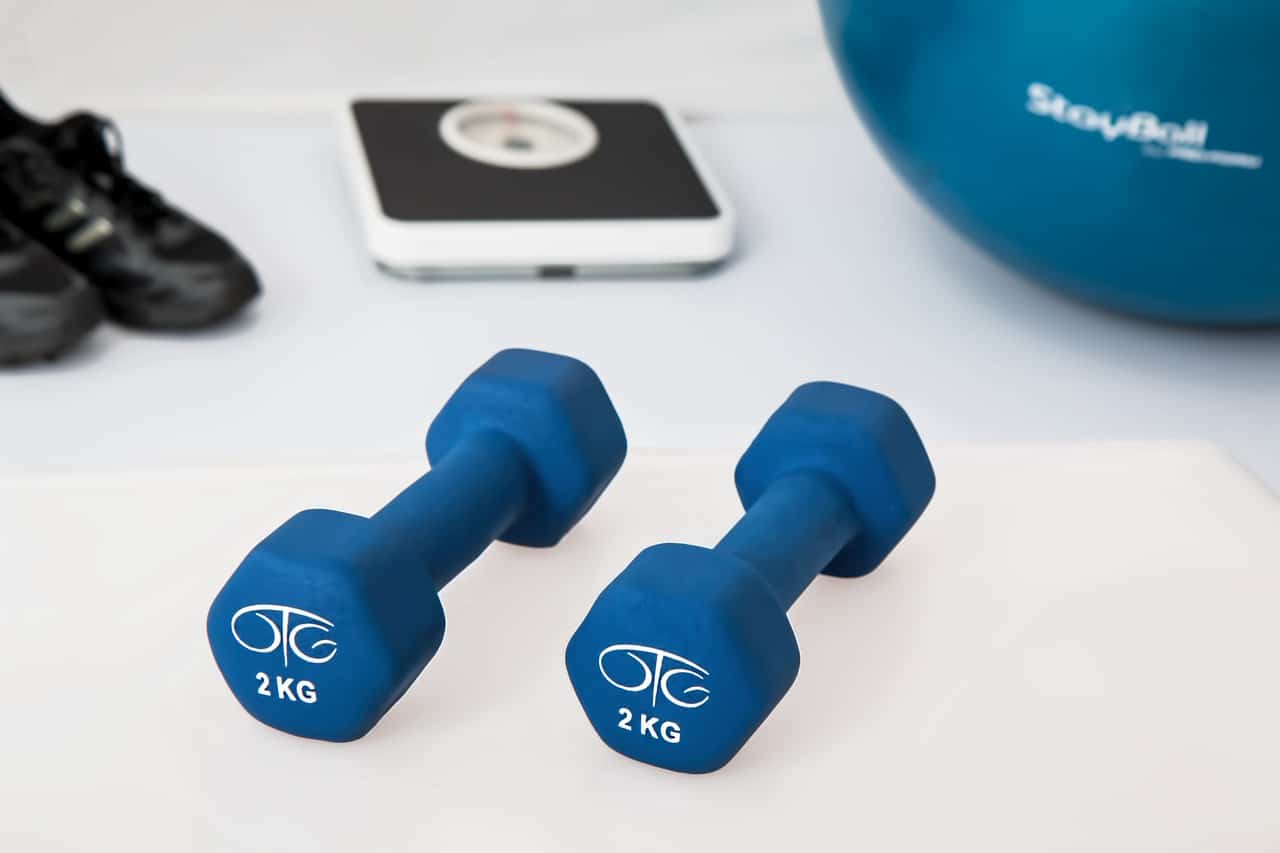Menu
Musculoskeletal Physiotherapy is a specialised field dedicated to the assessment, diagnosis, and management of musculoskeletal conditions. It plays an important role in supporting people in Australia to manage pain in various parts of their body and improve their mobility and quality of life.
Physiotherapy is a recognised Allied Health Therapy in Australia and one of the more recognised options for many injury and chronic pain sufferers. Musculoskeletal Physiotherapy is one of the main branches of Physiotherapy generally and is practiced by many Physiotherapists around Brisbane, Queensland and Australia.

Understanding Musculoskeletal Physiotherapy
Musculoskeletal Physiotherapy focuses on supporting the management of injuries and conditions affecting the muscles, bones, joints, and nerves. It employs a variety of techniques, including manual therapy, exercise prescription, and education on pain management, to support the body's natural healing process and promote physical well-being.
The Benefits of Musculoskeletal Physiotherapy
Musculoskeletal Physiotherapy offers several benefits, designed to support patients in managing their conditions and enhancing their recovery process:
- Support in Pain Management: Through tailored Wellness Plans, Musculoskeletal Physiotherapy can support the reduction of discomfort and pain.
- Enhanced Recovery: It supports a quicker return to normal activities by addressing the root causes of musculoskeletal issues throughout the body.
- Improved Physical Function: By focusing on flexibility, strength, and coordination, Musculoskeletal Physiotherapy supports the improvement of overall physical function.
- Injury Prevention Strategies: Educating patients on how to prevent future injuries is a key component of Musculoskeletal Physiotherapy.
- Personalised Exercise Programs: Home-based exercises are often recommended to support ongoing recovery and well-being.

Musculoskeletal Physiotherapy in Depth
1. Personalised Rehabilitation Programs
In Musculoskeletal Physiotherapy, consultations are becoming more tailored to individual needs, including considering genetic differences. This means that Physiotherapists can create Wellness Plans (including exercise and rehabilitation plans) that are specifically designed for each person's unique genetic background. This approach helps in making the support offered by your Physiotherapist more effective, by focusing on your specific risks and recovery needs with a view to supporting better and faster outcomes.
2. The Integration of Manual Therapy with Modern Techniques
Musculoskeletal Physiotherapy combines traditional hands-on techniques with new technologies and methods. While manual therapies like joint mobilisation and massage remain fundamental, they are now being enhanced with newer techniques such as soft tissue techniques, dry needling, and laser therapy.
This blend of old and new approaches allows for a more comprehensive patient experience, aiming to support the healing of your body's tissues, alleviate pain, and improve bodily functions in a more effective manner.
3. Patient-Centered Care and Communication
Effective Musculoskeletal Physiotherapy involves a partnership between the patient and the therapist. This means that patients are actively involved in their recovery process, from setting goals to understanding and choosing their therapy options.
Good communication ensures that patients know what to expect from their consultation (and afterwards), understand their condition, and participate actively in their recovery. This approach not only makes patients feel more involved and informed but also tailors the support offered by their Musculoskeletal Physiotherapist to their personal needs and goals, leading to better satisfaction and outcomes.
4. Lifestyle Modifications and Preventative Strategies
Addressing musculoskeletal health also involves looking at a person's lifestyle and daily habits. Physiotherapists provide advice on how to make small changes in daily activities and work habits to support musculoskeletal health, such as improving posture and ergonomic practices to prevent strain and injury.
Additionally, they can recommend stress management techniques, knowing that stress can affect physical conditions. Practices like mindfulness, deep breathing exercises, and regular physical activities not only help in managing stress but also support overall physical and mental well-being, contributing to a holistic approach to musculoskeletal health.
5. Global Recognition and Standards
Musculoskeletal Physiotherapy is recognised globally, with standardised practices and guidelines in many countries. This ensures that patients around the world receive care that is based on the latest evidence and best practices in the field.
6. University Qualifications
Physiotherapists who focus on musculoskeletal conditions often undergo additional training and certification. This equips them with advanced skills and knowledge to assess, diagnose, and support a wide range of musculoskeletal issues more effectively.
7. Multidisciplinary Approach
Musculoskeletal Physiotherapists frequently work as part of a multidisciplinary team. This team may include doctors, surgeons, dieticians, psychologists, and occupational therapists, ensuring a comprehensive approach to patient care that addresses all aspects of their health and well-being.
At Brisbane Livewell Clinic, we have a number of different Allied Health and Natural Healing modalities, which patients can select to complement their Physiotherapy support.
8. Preventive Care Focus
Besides supporting recovery from existing conditions, Musculoskeletal Physiotherapy places a strong emphasis on injury prevention. Physiotherapists educate patients on how to avoid future injuries through proper exercise, workplace ergonomics, and lifestyle modifications.
9. Research and Innovation
The field of Musculoskeletal Physiotherapy is continually evolving, with ongoing research into new techniques, rehabilitation techniques, and technology applications. This commitment to innovation helps improve patient outcomes and keeps Physiotherapy practices at the forefront of healthcare.

When to Seek Musculoskeletal Physiotherapy
Recognising the need for professional support is the first step towards managing musculoskeletal conditions effectively. If you're experiencing persistent pain, limited mobility, or if your daily activities are impacted by discomfort, seeking the expertise of a Musculoskeletal Physiotherapist can be beneficial.
Find a Physiotherapist Near Me
Comprehensive Support in Musculoskeletal Physiotherapy
Musculoskeletal Physiotherapy provides targeted support for a wide range of conditions. Here are three case studies illustrating the support offered for different injuries:
Case Study 1: Post-ACL Reconstruction Rehabilitation - Sarah's Journey
Injury and Challenge: Sarah, a soccer player, underwent anterior cruciate ligament (ACL) reconstruction surgery following a sports injury. Her main challenges post-surgery were pain management, limited knee mobility, and the fear of re-injury upon return to sport.
Physiotherapy Support:
- Early Stage Rehabilitation: Sarah's Physiotherapist initiated gentle range-of-motion exercises and swelling control techniques to facilitate early healing.
- Strength and Stability: As Sarah progressed, her program focused on strengthening the muscles around the knee, particularly the quadriceps and hamstrings, and improving her balance and proprioception to prevent future injuries.
- Sport-Specific Training: Tailored drills that simulated soccer activities were introduced to prepare Sarah for a safe return to her sport, focusing on agility, speed, and coordination.
Case Study 2: Managing Chronic Lower Back Pain - David's Approach
Injury and Challenge: David, a 50-year-old office worker, experienced chronic lower back pain exacerbated by long hours of sitting and a lack of physical activity. His pain affected his daily activities and overall quality of life.
Physiotherapy Support:
- Ergonomic Advice: David received guidance on optimising his workstation to reduce strain on his back.
- Custom Exercise Program: A combination of core strengthening exercises, flexibility routines, and low-impact aerobic activities were prescribed to improve his back strength and reduce discomfort.
- Pain Management Techniques: Manual therapy and modalities like heat therapy were used to provide immediate pain relief, complemented by education on self-management strategies for long-term benefits.
Case Study 3: Recovery from Tennis Elbow - Lisa's Path to Healing
Injury and Challenge: Lisa, a recreational tennis player, developed lateral epicondylitis, commonly known as tennis elbow, causing significant pain in her forearm and limiting her ability to play.
Physiotherapy Support:
- Manual Therapy: Lisa's treatment included soft tissue massage and mobilisations to alleviate pain and improve tissue flexibility.
- Strengthening and Stretching: A series of targeted exercises aimed at strengthening the forearm muscles and stretching the tendons were introduced to reduce strain on the elbow.
- Activity Modification: Lisa was advised on modifying her tennis technique and using supportive equipment, such as elbow braces, to prevent recurrence.
These case studies show how Musculoskeletal Physiotherapy can support a wide array of injuries, offering personalised Wellness Plans that encompass pain management, rehabilitation exercises, and preventive strategies to support patients' recovery and return to their daily activities.

The Consultation Process
The consultation process at Brisbane Livewell Clinic begins with a comprehensive assessment to diagnose the specific condition. Following this, a personalised Wellness Plan is developed, which may include:
- Manual Therapy: Techniques such as joint mobilisation and massage to support the body's healing process.
- Exercise Rehabilitation: Tailored exercises designed to support strength, flexibility, and mobility.
- Pain Education: Understanding pain and its physiological mechanisms can support patients in managing their conditions more effectively.
Choosing the Right Musculoskeletal Physiotherapist
Selecting a qualified and experienced Musculoskeletal Physiotherapist is crucial. Physiotherapists like Ciaran Caldwell at Brisbane Livewell Clinic, with years of experience and a commitment to patient care, can provide the support needed to navigate the complexities of your musculoskeletal health.
Conclusion
Musculoskeletal Physiotherapy offers a supportive pathway for people dealing with pain and mobility issues. By focusing on personalised care, it supports patients in managing their conditions and improving their quality of life.

FAQs
1. Do I need a GP referral?
You can book an appointment with a Musculoskeletal Physiotherapist without a GP referral. However, you can also ask your GP to refer you to Ciaran Caldwell at Brisbane Livewell Clinic as part of your EPC.
2. Is this service covered by health insurance?
Many health insurance plans offer coverage for Musculoskeletal Physiotherapy. It's recommended to check with your provider for specific details.
3. What Conditions Can Musculoskeletal Physiotherapy Treat?
Musculoskeletal Physiotherapy is effective in supporting a wide range of conditions, including but not limited to chronic back pain, sports injuries like ACL tears, repetitive strain injuries such as tennis elbow, post-surgical rehabilitation, osteoarthritis, and conditions like frozen shoulder and sciatica.
4. How Long Does It Typically Take to See Improvements with Musculoskeletal Physiotherapy?
The duration for noticeable improvements can vary depending on the specific condition, its severity, and the patient's response to therapy. Generally, patients may start to see positive changes within a few sessions, but complete recovery could take weeks to months of consistent therapy and adherence to prescribed exercises.
5. Is Musculoskeletal Physiotherapy Painful?
While Musculoskeletal Physiotherapy aims to support the alleviation of pain and improved function, some movements or exercises may cause discomfort, especially when starting a new Wellness Plan. Communicate with your Physiotherapist about any discomfort experienced during sessions as they can adjust the treatment accordingly.
6. Can Musculoskeletal Physiotherapy Prevent Surgery?
In many cases, Musculoskeletal Physiotherapy can effectively support the management of pain and improvement of function to the point where surgery may not be necessary. However, this depends on the condition's nature and severity. Early intervention is key to maximising the potential of Physiotherapy to prevent surgery.
7. What Should I Wear to My Musculoskeletal Physiotherapy Sessions?
It's best to wear comfortable, loose-fitting clothing that allows easy access to the area being treated and does not restrict movement. For lower body issues, shorts are recommended, and for upper body conditions, a tank top or loose-fitting shirt may be ideal.
8. How Often Should I Attend Musculoskeletal Physiotherapy Sessions?
The frequency of sessions will depend on your specific needs and the Wellness Plan devised by your Physiotherapist. Initially, you might need to attend sessions more frequently, which could be adjusted as you progress in your recovery.
9. Can I Do Musculoskeletal Physiotherapy Exercises at Home?
Your Physiotherapist will likely prescribe exercises to be performed at home to complement your in-clinic consultations and exercises. Adhering to these home exercises is crucial for the effectiveness of your overall Wellness Plan and helps support the acceleration of your recovery process.
Useful Articles by Brisbane Livewell Clinic
Paediatric Physiotherapy: Everything You Need to Know
Finding a Paediatric Physio Near Me: Expert Support in Wavell Heights
Understanding Physiotherapy: A Comprehensive Guide in 2024
Is Physiotherapy Covered by Medicare?
Ciaran Caldwell - Our Physiotherapist at Wavell Heights, Brisbane
Musculoskeletal Physiotherapy: Supporting Your Pain Reduction & Increased Mobility
When Should I See a Physio for Knee Pain?
Physiotherapy Phone Consultation: FREE 15 Minute Discussion with our Physio
Discover Livewell Physiotherapy with your Livewell Physio
Welcoming Physiotherapist Ciaran Caldwell
External Resources
Australian Physiotherapy Association - This site offers resources, advocacy support, and professional development for physiotherapists in Australia. Australian Physiotherapy Association
PEDro - Physiotherapy Evidence Database - PEDro provides a vast database of over 60,000 clinical trials, systematic reviews, and guidelines for physiotherapy practice. PEDro
Physiotherapy Board of Australia - The official regulatory body for the physiotherapy profession in Australia, providing standards, codes, and guidelines to ensure safe practice. Physiotherapy Board of Australia
Australian Physiotherapy Council - The accreditation authority for physiotherapy education providers in Australia, ensuring the quality of physiotherapy education and practice. Australian Physiotherapy Council
Healthdirect Australia - A government-funded service, providing quality approved health information and advice. Healthdirect Australia
OzTREKK - Provides information about Australian physiotherapy programs to international students, particularly those from Canada. OzTREKK
Master of Physiotherapy at The University of Queensland - Offers postgraduate physiotherapy programs recognized for their depth and expertise in musculoskeletal and sports physiotherapy. The University of Queensland
Choose Physio - An Australian Physiotherapy Association website that helps the public find physiotherapists and provides information on how physiotherapy can help improve quality of life. Choose Physio
ACU Master of Sports and Exercise Physiotherapy - Details about the sports and exercise physiotherapy course offered by Australian Catholic University, emphasising advanced practice. ACU
Australian Institute of Health and Welfare - Provides comprehensive statistical information that can include data on physiotherapy services in Australia. AIHW


